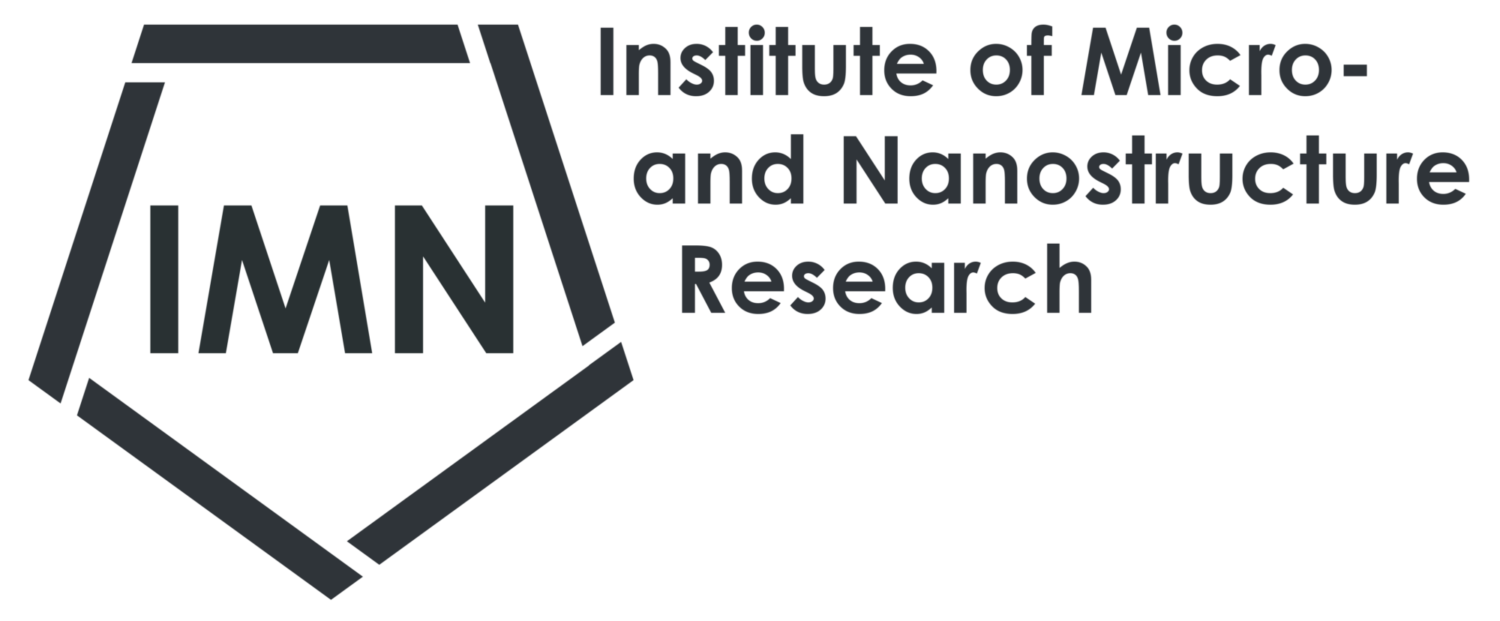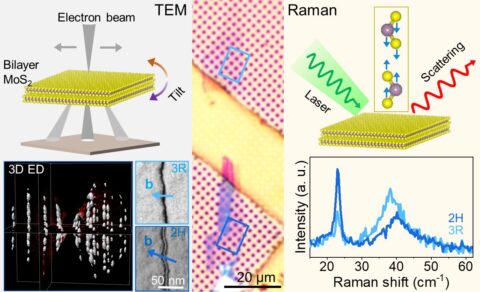Correlative TEM-Raman study exposes unexpected stacking phases and dislocations in bilayer MoS₂
Researchers at the Institute of Micro and Nanostructure Research (IMN) and the Center for Nanoanalysis and Electron Microscopy (CENEM), Chair of Experimental Physics, Institute for Crystallography and Structural Physics (ICSP) at FAU Erlangen-Nürnberg, have unveiled an unexpected coexistence of 2H and 3R stacking orders—and their characteristic dislocations—inside a single exfoliated bilayer MoS₂ flake. The findings, published this week in npj 2D Materials & Applications, demonstrate a correlative transmission electron microscopy (TEM) and low-frequency Raman workflow that resolves stacking sequences from the nanoscale to the millimetre scale.
Using centred dark-field TEM, the team distinguished perfect dislocations with Burgers vector b = (1/3)⟨2 1 -10⟩—a fingerprint of the centrosymmetric 2H phase—from partial dislocations (b = (1/3)⟨0 1 -1 0⟩) that separate AB/AC domains in the non-centrosymmetric 3R polytype. Quantitative relrod analysis from 3D electron diffraction pinpointed the layer number and symmetry, while complementary shear- and layer-breathing Raman modes provided wafer-scale confirmation.
“Seeing both polytypes in a flake peeled from a purely 2H bulk crystal hints at a strain-induced phase transition during exfoliation,” the authors note, underscoring how subtle fabrication stresses can alter electronic and piezoelectric functionality. The correlative approach overcomes the limited field of view of electron microscopy and the diffraction‐limited resolution of optical probes, offering a general roadmap for mapping stacking orders and defect networks in van der Waals materials—a prerequisite for reliable twistronic and optoelectronic device engineering.
The work is lead by Dr. Xin Zhou and Prof. Erdmann Spiecker. The work originated from CRC 953 “Synthetic Carbon Allotropes” (2012–2023) and demonstrates the lasting impact of that program. Its correlative philosophy now underpins the newly awarded DFG Research Training Group “Correlative Materials Microscopy (CorMic)”, funded with €8.7 million until 2031, which will broaden the approach to a whole family of functional 2D and energy materials.
Further informaiton:

